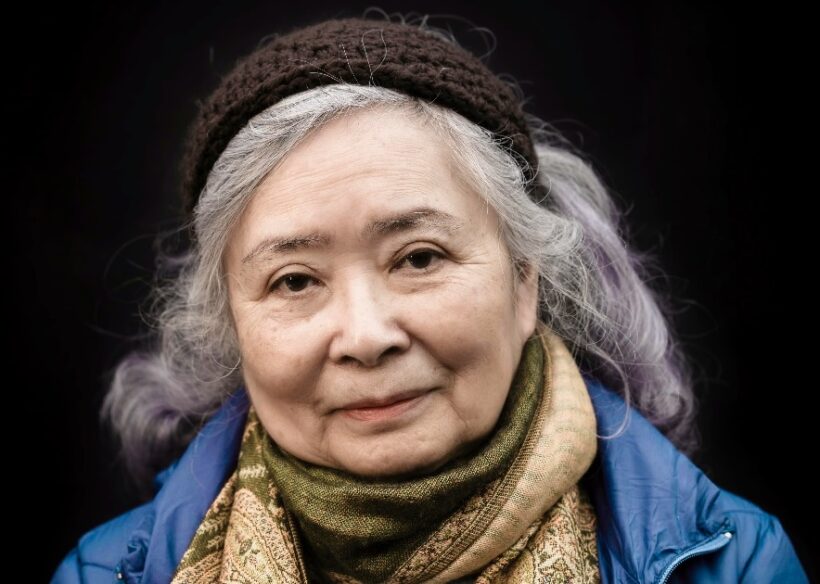On August 22, the Court of Appeal in Paris once again declared inadmissible the desperate appeal for justice by Tran To Nga, a Franco-Vietnamese activist and journalist, against the fourteen companies responsible for the production of the defoliant “Agent Orange” .
This poison was sprayed in the Vietnamese forests by the US military between 1962 and 1971 during the Vietnam War (1959-1975), causing an environmental disaster of immense proportions, the health effects of which are still being felt today by the fourth generation.
Tran To Nga, like millions of Vietnamese, is one of the victims affected by irreversible side effects of Agent Orange (the code name given by the US military to the defoliant, Ed.) , and for the second time, after 2014, she had filed a lawsuit against 24 producers of the herbicide for damages especially for her family, and her two surviving daughters, who suffer from diseases induced by contamination by Agent Orange . However , the 2021 appeal was rejected on the excuse that the producers in question enjoyed legal immunity, since they had worked for a sovereign government, therefore they were not prosecutable and could not answer for the tragedy caused by the defoliant on the Vietnamese population.
Agent Orange , a desiccant rich in the pollutant dioxin TCDD (one of the most toxic components in chemistry, and the protagonist in Italy of the Seveso disaster, at the Ilva in Taranto and in Campania in 2007), was created at the request of the American Department of Defense to carry out a blanket desiccation of over 4.5 million hectares, where the rich flora could hide the Viet Cong, or the People’s Liberation Armed Forces of South Vietnam who were fighting for the independence of the country . The use of this highly toxic desiccant together with napalm was approved in 1961 by the President of the United States, John Kennedy, specifically designed for the military operation called “Ranch Hand”. In doing so, the American armed forces not only carried out a real defoliation of vast areas through the spraying of herbicide, but also poisoned the crops, thus affecting entire villages, and civilians, forcing them to abandon the areas, where the Vietnamese resistance was active, and to settle in the part already controlled by Western forces. However, the contamination spread thanks to the rivers causing a real “ecocide”, death, incurable diseases in all contaminated subjects such as chloracne , and finally genetic diseases, even hereditary, and malformations in unborn children.
Among the major manufacturers of Agent Orange were Dow, Monsanto, Diamond Shamrock, Hercules, Uniroyal, Thomson Chemicals, etc. In March 1965, Dow Chemical called a secret meeting with all the manufacturers where the poor quality of the product in terms of the purity of the chemical formulation and, therefore, its high toxicity was widely discussed, but this information was specifically ignored.
The toxicity of the aforementioned defoliant was equally well known in the US military environment, but it was preferred to ignore the manufacturers’ recommendations and triple the dose of the quantity of dioxin, making it lethal:
” When we started the herbicide program in the 1960s, we were aware of the potential harm from dioxin contamination in the herbicide. We were even aware that the military formulation had a higher concentration of dioxin than the civilian version, because of its lower cost and speed of production. However, since the material was to be used on the enemy, none of us had any qualms . ” Dr. James R. Clary, former senior scientist at the Chemical Weapons Branch (Air Force Armament Development Lab in Florida)
Today it is estimated that at least 3 million Vietnamese have been exposed to dioxin, some experts even speak of 4.5 million inhabitants, of whom 150,000 children have been affected .
After sufficient studies conducted on dioxin, researchers have discovered that after 40 years the harmful effects are still present , since the land is still contaminated by the substance and today there are many children born in Vietnam who present malformations and genetic diseases .
This is not the first time that compensation lawsuits for Vietnam victims have been filed against multinationals implicated in this war crime. However, compared to the lawsuits filed by US and Korean veterans against the United States and manufacturers based on the report of side effects from Agent Orange and won in the 1970s and 1980s, the first victories recorded by Vietnamese nationals in compensation lawsuits for health damage caused by the herbicide and the official recognition of Agent Orange as a biological weapon by the United States have only occurred since 2007 : of the responsibility of multinationals towards the citizens of Vietnam, still no trace.
For this reason, Tran To Nga, a graduate in chemistry, former partisan of the Viet Cong liberation movement, and former prisoner, still today at the age of 82 continues to fight for her family, and in the name of her people , thanks to the support of associations such as the Vietnam Association for Victims of Agent Orange / Dioxin (VAVA) and the government of Vietnam.
For more information, visit activist Tran To Nga’s website: https://nga-orange.org/






